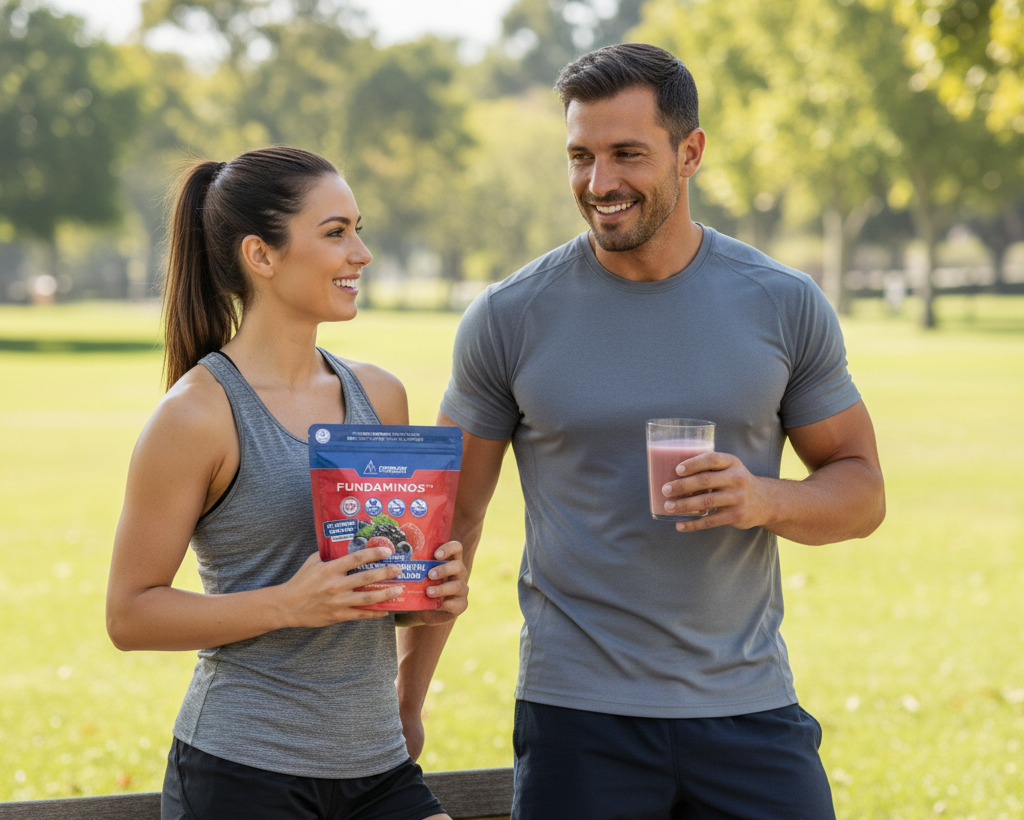
Cutting Through the Hype Around EAAs, BCAAs, and Creatine
Supplements are a $60-billion industry, yet most people still misunderstand the foundation of muscle, recovery, and metabolic health. The core truth hasn’t changed: essential amino acids (EAAs) are the building blocks of every protein your body makes. Everything else—creatine, stimulants, “recovery drinks”—depends on them being in balance and properly working first.
1. The Physiology That Everyone Forgets
Muscle, enzymes, hormones, neurotransmitters—nearly all require amino acids. Nine of them are essential, meaning the body cannot synthesize them and must obtain them through diet. When even one essential amino acid is missing, protein synthesis stops—regardless of how much total protein you eat.
That’s why EAAs determine the “quality” or anabolic potential of any protein source. The closer the amino ratio matches human requirements, the higher the net muscle-protein synthesis (MPS) and nitrogen retention.
2. Debunking the Popular Myths
Myth #1: “BCAAs alone build muscle.”
Branched-chain amino acids (leucine, isoleucine, valine) trigger MPS but can’t complete it. In fact they can when over supplemented degrade muscle tissue from your body. Without balanced EAAs, muscle synthesis halts mid-process. Multiple controlled studies show no added benefit of isolated BCAAs compared with complete EAAs.
Myth #2: “Creatine replaces amino acids.”
Creatine recycles ATP inside the cell—it doesn’t supply structural material. It’s like improving the battery efficiency without adding building material for the muscle itself. Creatine works best after amino sufficiency, not instead of it and most certainly not in combination with aminos without first the discussion with your doctor.
Why? Creatine and amino acids affect different parts of the performance equation, combining them without context is negligent. Creatine may also not absorb optimally if you only take it with EAAs. Problems arise when people stack them wrong or misunderstand what each does.
Myth #3: “More protein powder = more growth.”
Whole protein digestion is slow and wasteful; up to 70 % of nitrogen can be lost as urea or ammonia when intake exceeds utilization capacity. This puts strain on the kidneys, digestive system, and recovery systems. EAAs, in contrast, are absorbed within minutes and achieve >99 % anabolic efficiency with minimal metabolic waste and virtually no metabolic stress.
3. The Real Science: Why EAAs Outperform Everything Else
- Stimulates MPS directly: Leucine acts as a switch via mTOR, but requires all EAAs to build full proteins.
- Prevents muscle breakdown: Balanced EAAs maintain plasma amino levels, limiting catabolism during fasting or stress.
- Improves mitochondrial and enzyme function: Amino availability drives synthesis of oxidative enzymes and antioxidant defenses.
- Supports neurotransmitter and hormone balance: Tyrosine, tryptophan, and methionine are precursors for dopamine, serotonin, and methylation cofactors.
4. What “Anabolic Utilization” Actually Means
The body doesn’t care about grams of protein; it cares about how much is used to build tissue. EAAs in the correct ratio approach 99 % net nitrogen utilization, compared to ~30–40 % for typical whey or soy proteins. Less waste means less digestive stress, faster recovery, and better lean-mass preservation during calorie restriction.
5. The Clinically Balanced EAA System
After decades of research, our team built FUNDAMINOS—a plant-based essential-amino complex modeled on the Master Amino Pattern (MAP) used in published nitrogen-balance trials.
- Complete optimized EAA matrix.
- 99 % anabolic utilization—virtually no nitrogen waste or bloating.
- Mixes clear, light taste, non-stim, vegan-friendly.
- Backed by independent amino-acid profiling and purity testing.
Two scoops deliver the building blocks your body needs to rebuild, recover, and adapt—no filler, caffeine, or sugar required.
6. Quick Reference FAQ
How is FUNDAMINOS different from whey or BCAAs?
Whey requires digestion; BCAAs are incomplete. FUNDAMINOS provides all nine EAAs in the ideal human ratio for instant utilization.
Do I still need creatine?
Creatine can complement EAAs but cannot replace them. Build the structure first, then enhance performance with creatine if desired.
When should I take it?
Empty stomach—morning, pre-training, or between meals—for fastest absorption and lowest nitrogen waste.
7. Key References
- Tipton KD, Wolfe RR. Protein and amino acids for athletes. J Int Soc Sports Nutr 2013.
- Wolfe RR. Branched-chain amino acids and muscle protein synthesis. J Int Soc Sports Nutr 2017.
- Volpi E et al. Essential amino acids stimulate MPS in elderly and young. Am J Clin Nutr 2015.
- Paddon-Jones D et al. Leucine-enriched EAAs improve muscle protein synthesis. Am J Clin Nutr 2004.
- Persky AM, Rawson ES. Creatine supplementation and skeletal muscle metabolism. Sports Med 2007.
